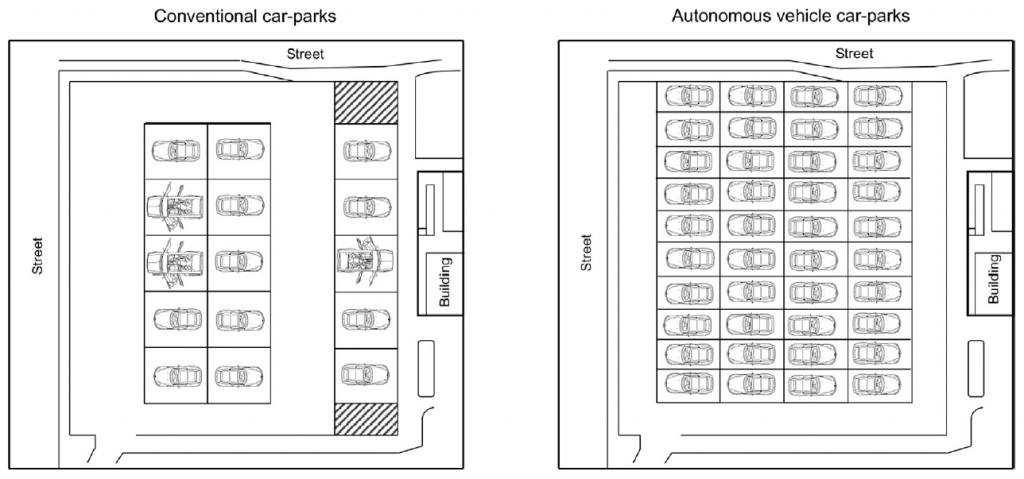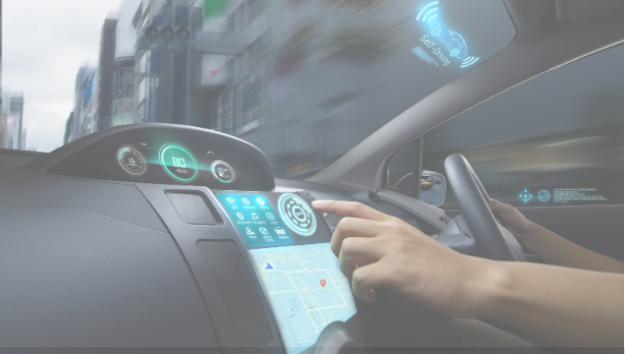With Tesla considered one of the best bubble stocks for 2021 (shares soared 743% in 2020 and made Elon Musk the richest person in the world for a few days), the company is at the center of people’s attention as it’s been evolving on a very public stage. While the market indicates an increasing interest in autonomous driving, AAA’s 2019 annual vehicle survey found that 71 percent of Americans are afraid to ride in self-driving vehicles, especially after several high-profile incidents came to light the past few years.
The statistics above suggest that we may still be a few years away from driving fully autonomous cars. For self-driving cars to be fully autonomous, they need to deploy technologies such as RADAR (Radio Detection And Ranging), and LiDAR (Light Detection And Ranging) as well as algorithms to detect and respond to surroundings.
Can Autonomous Vehicles Be More Dangerous Compared to Traditional Vehicles?
Autonomous vehicles can be much more vulnerable than other devices we use in our daily lives as they utilize a combined deployment of various sensors and vehicle-related technologies. It’s known that even a single vulnerability can allow hackers to exploit the entire vehicle – meaning hackers may not only gain access to the operating system but possibly the entire network as well.
What’s more, autopilot has helped set the standard for numerous autonomous vehicles and gave a taste of what self-driving cars will be like in the near future. However, experts at the Tencent Keen Security Lab demonstrated that they could remotely compromise the Autopilot system on a Tesla vehicle. Even though the bug was promptly fixed after the presentation, this situation sheds some light on the potential for exploitation. As autonomous vehicles rely highly on “connectivity” itself, there’s no doubt that hackers see autonomous vehicles as tempting targets that contain countless amounts of data that can be used to exploit the system, which in theory could end up destroying every single aspect of the vehicle.
That is why in-vehicle security and the complexities involved have been the major focus of any discussion about autonomous vehicles. In-vehicle security isn’t just about protecting and securing the autonomous vehicle itself, but rather about mitigating as many risks as possible through the delivery of a comprehensive and holistic approach to automotive driving security.
How Can Autonomous Vehicles be Secured?
In order to secure the whole autonomous driving process, an important fact needs to be emphasized; these vehicles aren’t like the traditional ones out there. The complexity of autonomous vehicles makes it far more difficult to fully secure the vehicle – though it’s not impossible – and the only way to do that is by prioritizing security.
One possible solution is in-Vehicle Security (IVS) which is the car’s first line of defense that helps protect vehicles from external threats, monitors all relevant communications, and responds to any abnormal activity. As a result, deploying IVS is what’s most important in securing the vehicle. IVS needs a reliable Intrusion Detection System (IDS) that provides the security modules needed to guarantee safe communications between Electrical Control Units (ECUs).
Additionally, with the adoption of new regulations, it’s important to make sure that your provider is prepared to meet the requirements of WP.29 along with other industry standards of deploying a system that secures communication between vehicles, devices, and infrastructures.
This is where machine learning comes in.
How Can Machine Learning Enhance the Security of Autonomous Vehicles?
Machine learning is the process of using, storing, and finding patterns within massive amounts of data, which can eventually be fed into algorithms. It’s basically a process of using the data accumulated by the machine or device that allows computers to develop their own algorithm so that humans won’t have to create challenging algorithms manually.
With all the features and applications of machine learning, it’s easy to understand how our collected data are stored and used via a proper platform which in turn analyzes logs and patterns. In this way, this platform can warn and even mitigate risks occurring within the vehicle.
In other words, once the logs are collected and stored, machine learning technology can start analyzing and detecting these logs to see if there are any abnormalities. As machine learning enhances the detection model, it develops algorithms that can be used to detect malware activities and unusual behaviors of the vehicle. This process enhances the driver assistance technology by classifying the right data and patterns through various sensors attached to the vehicle.
Moreover, thanks to the advances in wireless technologies, a vehicular (ad-hoc) network is being formed among moving vehicles or RSUs (Roadside Units) and other communication devices. This network is considered a proprietary system that is seen differently from average computer networks, making it easier to predict the movements of vehicles. Machine learning can be employed in training algorithms from the very beginning to detect malicious exploits by differentiating normal from acute driving behavior which alerts the driver and prevents an attack.
In order to realize this, NXP is taking the lead in manufacturing microcontrollers with AI and machine learning capabilities that can be plugged into the OBD-II port. This not only observes but also allows the device to capture the vehicles’ data patterns to detect and monitor any abnormalities. Once it’s monitored, the microcontroller basically tries to prevent and alert the driver and becomes the replacement for traditional algorithms employed in vehicles.
Autonomous Driving is Not the Distant Future
It’s important to realize that autonomous vehicles that aren’t prioritizing security will cause far more serious consequences that involve physical harm or could even be abused by rogue nations and terrorists that are looking to cause chaos. Therefore, different security technologies must be considered when designing the security architecture from the very beginning.
Also, machine learning can become an essential tool for OEMs, Tier-1 suppliers, or manufacturers that are looking to secure their autonomous vehicle and driving-related resources. After all, the new transportation system will need a total security solution that covers from intelligent transport system to in-vehicle, charging and connections security.
AUTOCRYPT’s Automotive Cybersecurity Solutions
AUTOCRYPT provides a total vehicle security solution that secures all parts of a vehicle by providing various security modules such as firewalls, authentication systems, to secure the vehicle from end to end.
To keep informed with the latest news on mobility tech and automotive cybersecurity, subscribe to AUTOCRYPT’s monthly newsletter.



